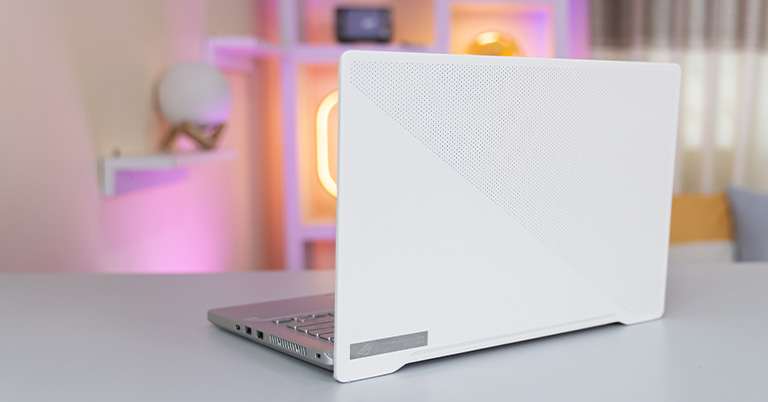No headings found
Why Trust Gadgetbyte?
At Gadgetbyte, we invest substantial hours into rigorously testing each product or service we review, guaranteeing that you make informed purchases. Learn more about our testing process.
Review Overview
The Asus Zephyrus G14 is a decent laptop with a stellar design and one that outputs good performance, but its thermals are not up to the task at all.
Design and Build
9/10
Performance
8/10
Display
7/10
Gaming Performance
7/10
Keyboard
7/10
Trackpad
8/10
Battery
8/10
Value for Money
7/10
Ever since Asus launched the Zephyrus G14, I was dying to get my hands on it. I mean great design combined with a powerful processor, who wouldn’t want it right? And I am glad that I finally get to review the Asus Zephyrus G14. This laptop is a joint effort from Asus, Nvidia, and AMD to bring a top performance laptop in a small-form. So, with that in mind, I went ahead and tested my Asus Zephyrus G14 GA401IH. My review unit came with Ryzen 5 4600HS processor, 8GB of RAM, 512 GB storage, and GTX 1650 50W GPU. It is the base model of the G14. The top-tier configuration of the G14 comes with Ryzen 9 4900HS processor and Nvidia RTX 2060 Max-Q graphics. Competition-wise, the G14 goes head to head with Razer’s Stealth 13 and MSI’s Prestige 14. However, they featured the same old NVIDIA-Intel configuration. And for the most part, those laptops were not appreciated by the masses. However, the G14 is different. After all, many out there have already labeled it as “the perfect gaming ultrabook”. So, with that expectation in mind, I started testing this laptop. I had high hopes regarding this device, and don’t get me wrong, this laptop does get most of the things right. However, there is one area where it lacks by a country mile. And that has led to me having sort of mixed feelings about this laptop. Anyway, let’s get on with our review of the Asus Zephyrus G14 GA401IH and find out what I believe works for this laptop and the thing that I found utterly disappointing.
Things that work
Design and Build
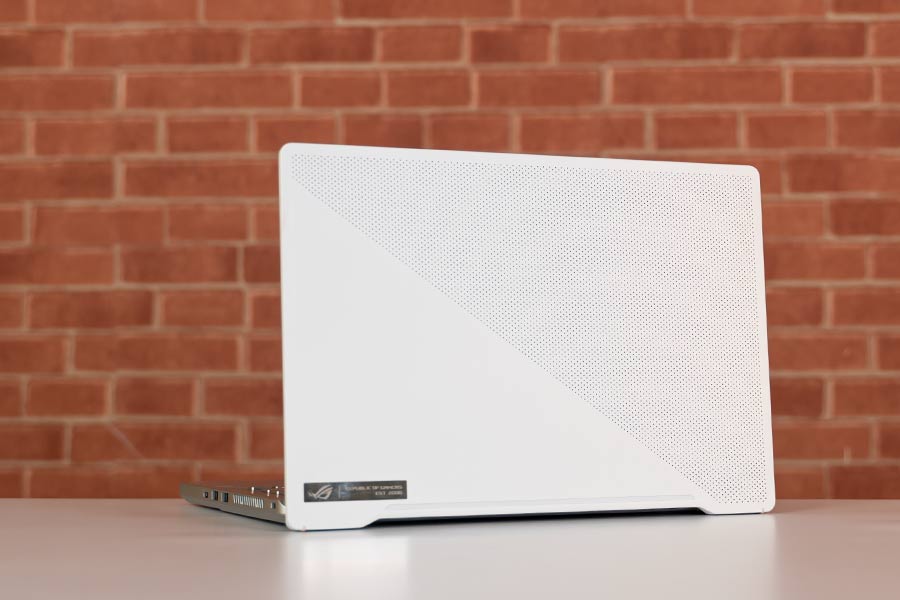
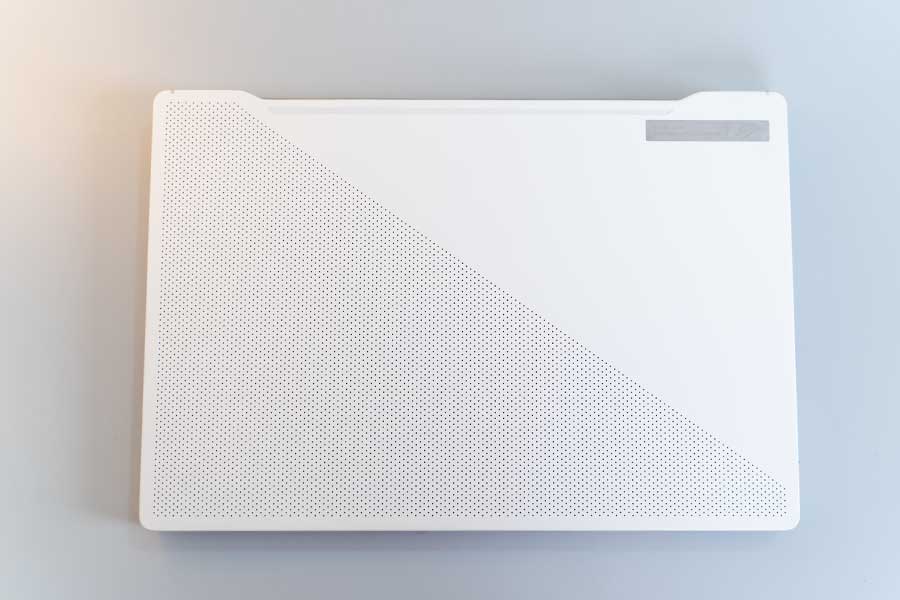

Screen
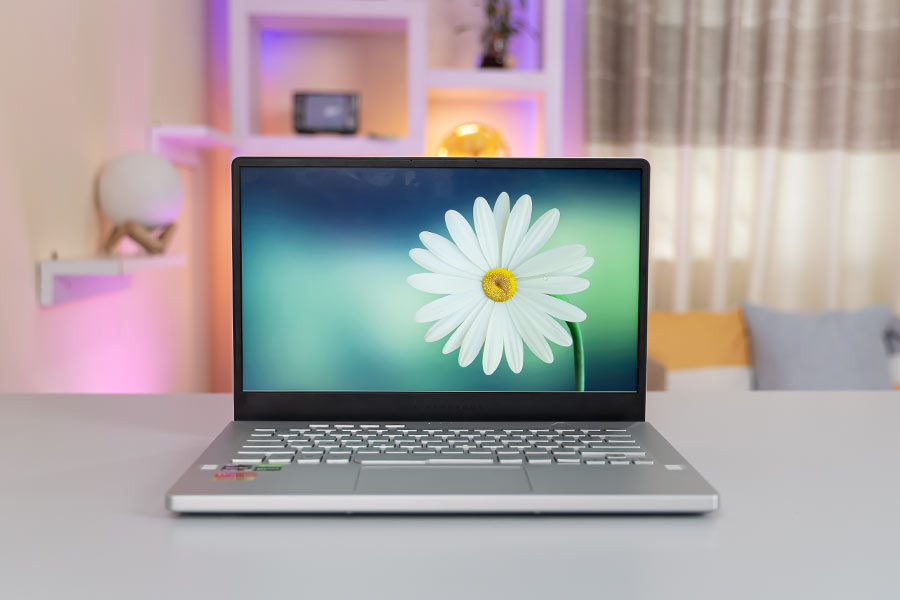
Keyboard and Trackpad
The Zephyrus lineups have a track record of sporting some of the great keyboards and this one is no different. It has the full deck of all the main keys with small navigation buttons in the main key panel. Just above the main deck, you’ll find the volume control buttons and a direct key for the Asus Armoury Crate. I really found the dedicated sound control keys to be very useful in my daily use. Now, due to its small form, Asus was unable to squeeze in a Numpad in the keyboard. And another major miss for me was the Home/End buttons. Given that they have dedicated keys for volume controls, maybe Home and End buttons could have been incorporated in the function keys. Not having the Home, End, PgUp and PgDown buttons can be especially frustrating for those who type often on their laptops.

Speakers
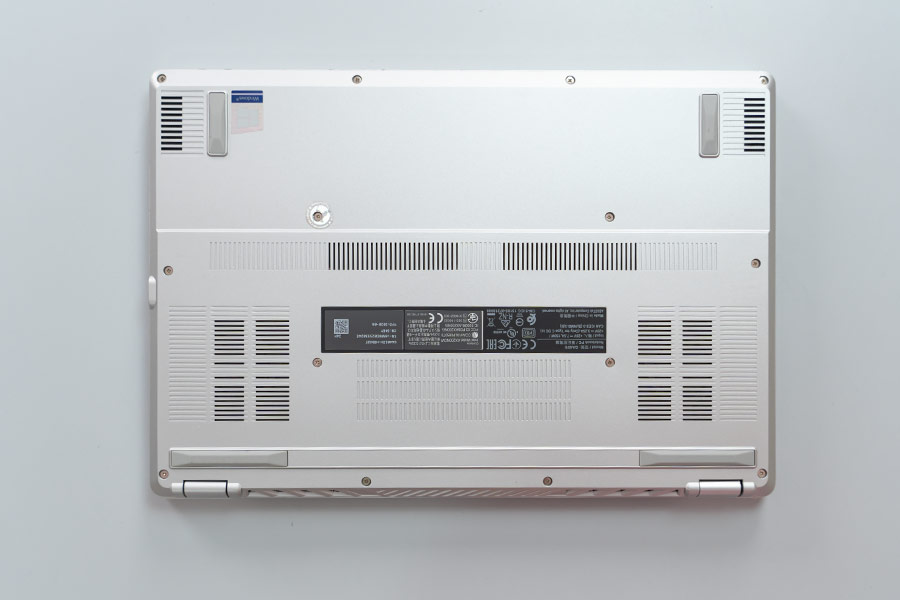
Battery
The 76Wh lithium-polymer battery Battery does a very good job and you should be able to squeeze in around 5 hours of battery while using it for your standard day to day task on a silent profile with the screen switched to 60Hz. So, if you tend to work on the go most often, then this laptop is the one to go for. Furthermore, as the laptop charges at 65W through the USB-C port, you’ll not have to worry about carrying a heavy power brick in your daily commute. You’ll only need to carry the large brick for gaming or demanding jobs. So, overall, the battery life is great and the inclusion of a USB-C charging port is a bonus.
Performance
Okay, so my review unit is configured with a Ryzen 5 4600HS APU. For more money, you can get one with a Ryzen 7 4800HS or Ryzen 9 4900HS. Anyhow, you get an HS APU, which by far are the best ones from AMD. They are power-optimized and despite running at 35W, they are capable of delivering the same performance as that of the 45W Ryzen H processors. Furthermore, currently, only Asus has the exclusivity of using these HS processors as AMD is only willing to collaborate with those who can implement these processors on solid hardware. So, you can safely say that the hardware on this laptop is top-notch. On top of that, it supports the faster DDR4 3200MHz RAM and has 512GB M.2 NVMe PCIe 3.0 x4 storage. However, there is one problem. The 8GB of onboard RAM is actually soldered. However, there is a vacant slot and I personally recommend you to upgrade it to 16GB and make it dual-channel for slightly better performance. Talking about the GPU, this base variant comes with an Nvidia GTX 1650 4GB 50W chip. This again is not the best chipset but it is what you get for this price range. In higher-end variants, you can get up to RTX 2060 Max-Q. And those are the best ones for sub-15-inch laptops. Nonetheless, the combination of GTX 1650 and Ryzen 5 4600HS shines in its own way. You get four power profiles that can be chosen from the armory crate or through the fan toggle button. The profiles are Silent, Performance, Turbo, and Manual. You’d want to play games or perform demanding jobs in the Turbo profile as it increases CPU power allocation and overclocks GPU. With manual, you can control fan cures for CPU and GPU based on temperature thresholds. However, these two are only available when plugged in. For everyday multitasking though, the performance power profile is the best. Fan noises might bug you but after a while you sort of getting used to it. However, if the battery is your priority, you can opt for the Silent, but you’ll have to be ready for a few stutters every once in a while. Throughout my usage of this laptop, I played multiple games. And I was pretty impressed with what this laptop offered. I played all the games in the Turbo profile and toggled between the graphics settings in most games. They offer decent fps on most triple-A titles and that should suffice anyone who is planning on playing games on an ultrabook. This is how the laptop fares in most of the games:
| Games | FPS |
| Battlefield V (ultra presets) | 45-50 |
| Battlefield V (medium presets) | 55-58 |
| Battlefield V (low presets) | 60-75 |
| Witcher 3: Wild Hunt (ultra preset) | 39-40 |
| Witcher 3: Wild Hunt (high preset) | 54-60 |
| Witcher 3: Wild Hunt (medium preset) | 68-70 |
| Witcher 3: Wild Hunt (low preset) | 77-80 |
| Apex Legends (highest preset) | 76 |
| Apex Legends (medium preset) | 80 |
| Apex Legends (low preset) | 90 |
| Sekiro: Shadows Die Twice (max preset) | 58 |
| Sekiro: Shadows Die Twice (medium preset) | 60 |
| Sekiro: Shadows Die Twice (low preset) | 60 |
| Valorant (highest preset) | 112 |
| Valorant (medium preset) | 131 |
| Valorant (low preset) | 138 |
We can clearly see that for demanding games, the laptop will struggle with the highest graphics settings. But you can easily switch to medium settings without compromising much of the details and gaining significant fps in return. Overall, there were few stutters here and there, but given the configuration, I was pretty much satisfied with the performance of this laptop.
The thing that does not work
Thermals
Now, for the thing that has disappointed me the most. The thermal module on this laptop is a very complex one. There are multiple heat pipes and two fans to manage the heat. Over here, the air is sucked in from the top and the bottom and pushed out through the sides and the back. But with a powerful processor and GPU inside it, the metallic chassis runs hot - very hot! Even with the turbo profile on, the CPU constantly averages around 90 degrees. As for the GPU, it averages around the mid-80s. Furthermore, the chassis heats up real quick and after almost 8-10 mins of gaming, you start to feel the heat in the keys. The laptop delivers smooth performance, but this heating issue just makes games unplayable. Now, that isn’t great, is it? Also, the ergo lift design and the air exhausts near the hinge do not complement each other. The vents are actually designed to push air away from the screen. But that does not happen and you’ll see that the bottom chin and the lower part of the screen get heated too! You can opt to play games in the performance or the silent mode, but there you’ll be compromising fps and the laptop runs even hotter in those modes. Also, no matter the type of task that you are doing, the fans are always active. Though you won’t hear them spinning unless in a perfectly silent room. These heating issues occur when the laptop performs demanding tasks or while playing games. You won’t have to suffer through them while doing your everyday task. However, with a gaming ultrabook, one expects to play games and the G14 quite frankly cannot handle the heat.
The Verdict
The ROG Zephyrus G14 may not come with a high 144Hz refresh rate or a more color-accurate panel, but it does pack in a capable processor and is super portable. Compared to its competitors, the performance of the AMD Ryzen processor is very good. However, the heating issue is a major downside. One demanding task and you struggle to find a cold spot on the keyboard. So, for a laptop labeled as a gaming ultrabook, you won’t be able to do too much gaming due to its heating issues. But, the laptop still reigns in its own niche 14-inch market. Heating issue aside, you’ll probably not get a better laptop, performance-wise in this segment. However, If you are not looking for a gaming or using demanding tools, then my suggestion for you would be to go for the likes of Dell XPS 13 or Asus ZenBook.
Article Last updated: November 23, 2025



